![sukks1[1].jpg](/_next/image/?url=https%3A%2F%2Fcdn.marutitech.com%2F%2Fthumbnail_sukks1_1_5c11215584.jpg&w=3840&q=75)
![sukks1[1].jpg](/_next/image/?url=https%3A%2F%2Fcdn.marutitech.com%2F%2Flarge_sukks1_1_5c11215584.jpg&w=3840&q=95)
A Guide to Component-Based Design and Architecture: Features, Benefits, and More
![sukks1[1].jpg](/_next/image/?url=https%3A%2F%2Fcdn.marutitech.com%2F%2Fthumbnail_sukks1_1_5c11215584.jpg&w=3840&q=75)
![sukks1[1].jpg](/_next/image/?url=https%3A%2F%2Fcdn.marutitech.com%2F%2Flarge_sukks1_1_5c11215584.jpg&w=3840&q=95)
![sukks1[1].jpg](/_next/image/?url=https%3A%2F%2Fcdn.marutitech.com%2F%2Fthumbnail_sukks1_1_5c11215584.jpg&w=3840&q=75)
![sukks1[1].jpg](/_next/image/?url=https%3A%2F%2Fcdn.marutitech.com%2F%2Flarge_sukks1_1_5c11215584.jpg&w=3840&q=95)
![sukks1[1].jpg](/_next/image/?url=https%3A%2F%2Fcdn.marutitech.com%2F%2Fthumbnail_sukks1_1_5c11215584.jpg&w=3840&q=75)
![sukks1[1].jpg](/_next/image/?url=https%3A%2F%2Fcdn.marutitech.com%2F%2Flarge_sukks1_1_5c11215584.jpg&w=3840&q=95)
Frontend development has seen rapid evolution, with frameworks constantly emerging to meet growing user expectations. Starting with Dojo in 2005, the ecosystem progressed through jQuery (2006), AngularJS and Backbone.js (2010), Ember.js (2011), and React.js (2013), which remains a favorite today.
This fast-paced change has shifted focus to building adaptable, scalable software that maintains design integrity while meeting diverse business needs. Component-based architecture addresses this challenge effectively by enabling modular, reusable, and flexible components.
It empowers teams to deliver optimized, high-performing front-end applications without relying on costly specialists. With a component-based approach, businesses can scale development, streamline UI consistency, and reuse CSS across multiple products and templates—creating cohesive user experiences more efficiently.
Now widely adopted by companies looking to future-proof their apps, component-based architecture has become the standard for scalable and maintainable front-end development in today’s dynamic digital landscape.
In this article, you’ll better understand component-based development, how it functions, its documentation, tools, best practices, and much more. So, without further ado, let’s get started!
Component-based architecture development is a modern software engineering approach that emphasizes building applications using modular, reusable components. These components act as independent building blocks—such as a header, search bar, or content body on a web page—that work together to form a complete system while remaining decoupled from each other.
This architectural style has been widely adopted by companies like PayPal, Spotify, and Uber to improve scalability, speed up front-end development, and promote code consistency. As a result, many businesses are moving away from monolithic architectures in favor of a component-based development strategy. Key approaches in this transition include using components for shared libraries, adopting a producer/consumer model, and dividing development responsibilities across frontend and backend teams.
A component in this context is a self-contained, reusable object designed to deliver specific functionality. These components are flexible and modular, allowing them to be reused across different interfaces, modules, or even projects. They communicate with one another via defined interfaces (ports), ensuring seamless interaction while preserving code integrity and user experience.
Well-designed components follow repeatable conventions and can be shared through APIs, enabling other teams or businesses to integrate them into their own software effortlessly. By disassembling systems into cohesive and independent components, teams can build, expand, or update applications with minimal disruption.
Successfully implementing component-based architecture requires careful planning and execution. Partnering with experienced product management consultants, like those at Maruti Techlabs, ensures a smooth and strategic transition that maximizes long-term benefits.
Components are critical aspects of any frontend technology; following the foundation of AJAX requests, calls to the server can be made directly from the client side to update the DOM and display content without causing a page refresh. A component’s interface can request its business logic, updating its interface without forcing other component to refresh or modifying their UI, as components are independent.
It is ideal for tasks that might otherwise unnecessarily cause other components or the entire page to reload (which would be a drain on performance). Each component has specific features that can be overridden or isolated depending on how an application uses it.
For instance, components help Facebook improve its newsfeed’s operation and performance. React.js, in particular, manages components in an exceedingly efficient manner. React.js employs a virtual DOM, which operates a “diffing” method to identify changes to an element and render just those changes rather than re-rendering the whole component.
Therefore, it is essential to divide the software into numerous components, as utilizing them can better fulfill business goals than microservice-based architecture.
Components are usually dedicated to specific application layers, such as the backend or user interface. However, different types of components architecture are available for different application layers. Let us understand these various forms of components in detail below:
1.Themes
Themes define the look and feel of the application. They are typically characterized by style sheet rules and grid definitions used to position and size elements on a screen. It offers a consistent experience across all platforms and scenarios, providing unified branding regardless of potential factors such as specific objects.
Widgets are similar to components in many ways, except they’re not quite at that level yet. Widgets provide an additional and reusable feature, usually related to the user interface, and can instead become components when they include a set of definitions such as parameter and variable.
In a larger context, libraries are the icing on the cake. Libraries wrapped around widgets or blocks provide an easy-to-interact interface. For instance, JavaScript libraries tend to offer an excellent front-end experience.
As the name suggests, connectors allow integrations without writing custom codes, reducing time and effort and eliminating errors. Connectors allow you to integrate with other applications like Paypal or Facebook.
Plugins like Zapier allow integrations without needing to write custom code for your application. They are a must if you want to save time and effort while allowing customers to see their contacts in other places, such as Slack or Salesforce.
Building a mobile app using a component-based architecture is an efficient and scalable approach. To leverage the benefits of this architecture, hire skilled mobile app developers from a software development company like ours. Our seasoned mobile app developers are proficient in component design, modular development, code reusability, and quality assurance. They can assist you in building a cutting-edge mobile app that stands out in the competitive market.
Component teams are a new way of seeing how a team works together. A component team is a cross-functional Agile team focused on producing one or more specific components that you may utilize to generate only a part of an end-customer functionality. A component is a product module you can develop separately from other modules.

Component teams are essential when dealing with legacy technology, serving algorithms that demand technical and theoretical expertise and creating security and compliance. They are also helpful when you do not have people capable of working full-stack.
These component teams consist of people with varying expertise, such as design, development, or testing, that all meet up to create and deliver a refined component.
Team members can collaborate more efficiently and effectively compared to older team structures, where designers and developers struggle to meet halfway when completing their tasks. Component teams put forward a polished product because they work on complete ownership of their particular aspect and nothing else. They have a clear idea of the one aspect they specialize in.
Component-based development brings many advantages beyond just having reusable code bits in your software applications. The potential benefits are too many to mention here, but here are some of the important ones:
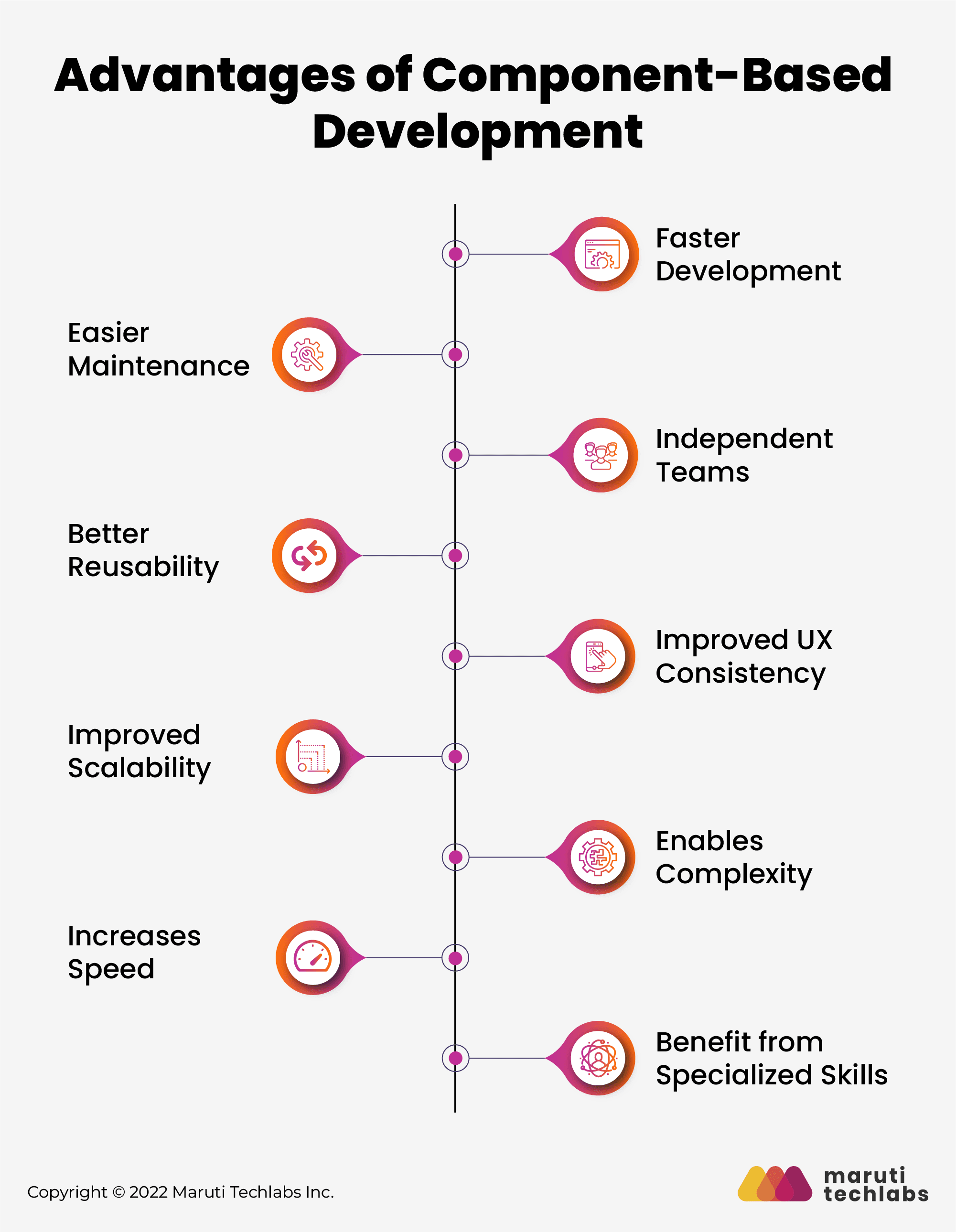
Component-based methodologies can help teams develop high-quality software up to 60% faster than those who do not utilize this method. By creating components from reusable libraries accessible at all times, teams do not need to start from scratch with their software. They can directly select from this library without worrying about non-functional requirements such as security, usability, or performance.
One of the crucial advantages of component-based architecture is that each component is independent and reusable. It helps decompose the front-end monolith into smaller and manageable components, making any upgrade or modification a breeze. Rather than modifying the code each time, you just need to update the relevant components once. Later, when new updates are released or a test has to run, simply add it to the appropriate component-based model. Viola! It’s that simple.
The cross-functional component teams treat the design-language system as one single truth source and create components without external assistance or interference. In this case, the components are self-contained but don’t affect the system. It will lead to forming autonomous teams because they have much freedom, flexibility, and accountability to decide how to keep their projects flowing smoothly.
Reusability has many benefits, including writing less code for business applications. When dealing with a component-based framework, developers do not have to register the same lines of code repeatedly and can instead focus on core functionality. They can then take these same components and apply them to other apps that might serve different needs or be implemented on various platforms.
For example, consider a component that provides authentication functionality to an application. While building the component, designers have designed it so that the only thing that would change in any application built using this component would be the actual authorization logic. The component itself would remain unchanged irrespective of the application it is used in.
You risk providing inconsistent and unclear experiences to your consumers if you employ an unsupervised front-end development methodology. However, working with component-based architecture, you’ll automatically guide consistent UI across all the components created within the design document.
If a product is new and people are signing up, the system will likely need to be ready for growth (and scalability). Component-based development allows purpose-built elements to work together like puzzle pieces.
A component-based architecture extends the modular benefits of a web application to the front end of your project. This allows you and your team to stay up with demand while retaining an easy-to-read and maintainable piece of code.
Enterprises can benefit from a compartmentalized architectural approach with a component-based architecture.
Like building blocks, global or local components can make your application robust. Using tried and tested components saves you time on the front end because you don’t have to think about compatibility or writing millions of lines of code that lead to more room for error. It also allows you to create complex applications and flows that grow with your business needs.
A component-based architecture focuses on assembling disparate parts into something that works for your enterprise. Instead of wasting time coding a function that already exists, you can select from a library of independent components. It will save you time in development so you can put your focus on other business needs.
A component-based architecture works for all kinds of applications: whether you’re a fan of CSS, JavaScript, or .NET development – many designers and developers blend their skills to make every app unique!
Component-based architecture is particularly well-suited for Saas platform development, where modularity and scalability are critical factors. If you want to keep up with demand while maintaining an easy-to-read and maintainable codebase, get in touch with us.
While CBA encourages reusability and single-responsibility, it often leads to polluted views. It also has some drawbacks, which is why many companies hesitate to switch. Let us look at some of these component-based development disadvantages in detail below:

While it is true that component-based architecture helps in breaking an application into separate and isolated modules and components, this modularization also causes another dilemma for IT administrators – to manage these individual modules or components. To organize the component-based architecture, you must test all the components independently and collectively. This can be a highly tedious and time-consuming process.
When working with component-based architecture, you can reuse components in different applications. Therefore, the demand for reusability of components can limit their customization options. Still, you must consider the added complexity of sharing and synchronizing states, dealing with race conditions, and other issues.
Finding a component to meet an application’s needs could sometimes be challenging. Because many components may need to be observed in a particular application, updating and maintaining component libraries can be complicated. They need to be monitored and updated frequently.
The use of many components might degrade readability. If the text is too complicated, it might be harder to follow and make sense of. Using images, videos, and other components to enhance the text can be helpful to make the content stand out, but using too many may make the content too complicated, making it challenging for readers to understand.
Below are some common characteristics of software components:

High-quality documentation is the backbone of any successful project. If someone who uses a component can’t figure out how to use it, it won’t be valuable, no matter how many features it has. Documentation should support the component API and drive effective development. Good documentation isn’t free. It takes planning and process, including example code accompanied by guidelines for how and when to use each component effectively.
Here are three categorizations for reliable component documentation:
Documentation is one of the most useful and often overlooked resources at your disposal. The documentation’s primary purpose is to equip the practitioners – engineers, designers, and everyone else – to use a component efficiently and effectively. A documentation’s ultimate goal is to help people, so as it grows, it will continue to serve different needs and varying degrees of knowledge depending on the reader’s interest.
Component doc can include a wide range of content, from enlightening text to helpful guidelines or information on a project in general. Discussion at the top will help evoke your team’s value and provide designers and engineers an overview of what will be included in the document content-wise. At a fundamental level, a component doc usually includes four types of content:
The documentation for a component is often split, with one team publishing details on how the design works for designers and another documentation with component code keeping engineers in mind. This fragmentation can occur by accident. One or both teams may need to get involved to avoid falling into this trap. While there certainly is value in each kind of documentation – as they complement each other rather than compete with one another – it’s always good to make sure that all content makes sense to users regardless of which approach they take when learning about a particular component’s functionality.
Component-based architecture in frontend and backend serves the same goal—modularity—but differs in focus and implementation.
In the frontend, components represent UI elements (e.g., buttons, headers) that are reusable and interactively render user experiences. They focus on user interface consistency, reusability, and faster development. In the backend, components are more about business logic, data processing, or API services—each acting as a self-contained unit responsible for a specific function.
Backend components enable scalability, maintainability, and service orchestration. While frontend components enhance user experience, backend components improve system performance and reliability—together enabling a cohesive, scalable full-stack application.
Component libraries are a great way to save your company’s time and money over the long term, but only if they’re done right. Documentation will ensure that others can quickly adopt your component library, so they’re not spending time trying to figure things out themselves or, worse yet – duplicating work by building something from scratch using different tools than you have used. So it goes without saying that providing excellent documentation for your component library goes a long way.
To help you save time when you’re out to create official documentation for your various components, here are some of the go-to tools for doing so much with little hassle involved:
Bit.dev enables users to share and collaborate on software architecture components. All your standard components are made discoverable so that you, your team members, and any other developers at the organization can quickly identify and utilize them in their projects. The components you share to bit.dev become discoverable in this particular hub, accessible only at work. You can search for components by context, bundle size, or dependencies.
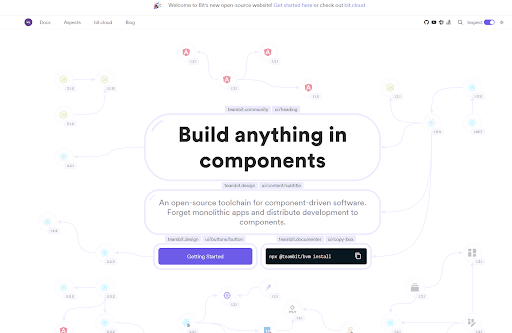
CodeSandbox is a free online editor for creating small projects like components. It’s not just an editor, though: CodeSandbox features built-in tools that integrate directly into your development workflow and your existing devices, enabling you to build something meaningful quickly.

Stackblitz allows users to program their web applications in an IDE-like environment where they can expect everything to be handled for them behind the scenes. This IDE provides a snippet that allows you to use version control with any type of project file without worrying about language syntax differences.
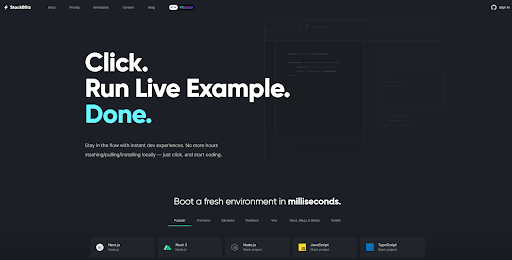 4.Docz
4.Docz
Markdown and JSX depend on developing and presenting documentation in a pleasant, organized way. Docz simplifies the process of creating a documentation website for all your components. Markdowns can be written anywhere in the project, and Docz streamlines the process of converting it into an attractive, well-kept documentation portal.
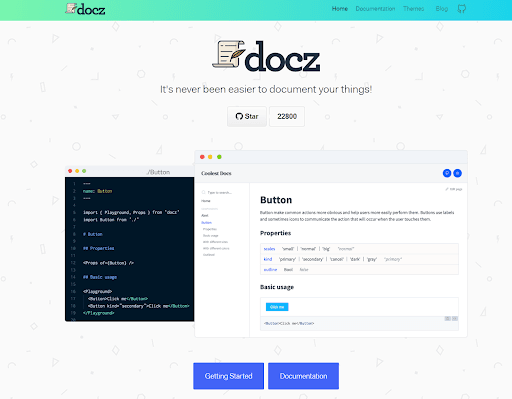 5.MDX- docs
5.MDX- docsMDX-docs is a tool for documenting and developing components. It allows you to use MDX and Next.js together and mix markdown with inline JSX to render React components. The tool will enable developers to write code blocks in JSX, which will then be rendered live by React-Live to provide developers with a quick preview of precisely what their component looks like without compiling it first.
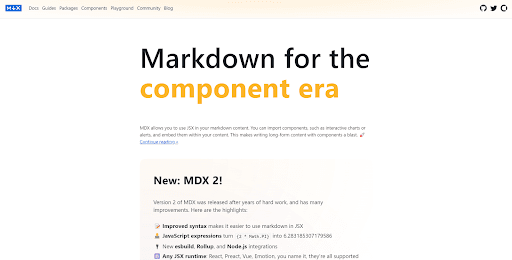
React DocGen is a command-line tool that will extract information from React component files. It parses the source into an AST using ast-types and @babel/parser and offers ways to analyze this AST to extract the needed information. You may then utilize this data to produce documentation or other resources and assets for software development tools.
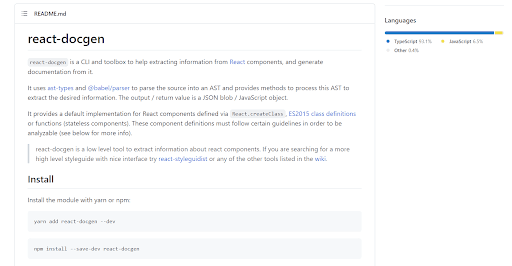
Out of all the tools we discovered above, Storybook and Chromatic are the most important. Let us study them in detail below:
Storybook is a user interface component development environment. It allows you to explore a component library and different component states and interactively develop/test components. When developing AddOns, StoryBook has become an essential tool for developers whose work often involves a visual display. This tool can help you, and your team create better relationships with your customers by allowing them to experience the application, not just view it!
Storybook’s best feature is that it opens up opportunities for developers to build fully decoupled components from their surroundings, resulting in wholly isolated components that work independently of anything else if needed. Storybook creates “stories” or mocked states by allowing you to manually define component props and then render each one in its standalone app. Because you can remove unnecessary dependencies otherwise linked to your code base as feasible, you won’t need a JavaScript framework or library other than React.
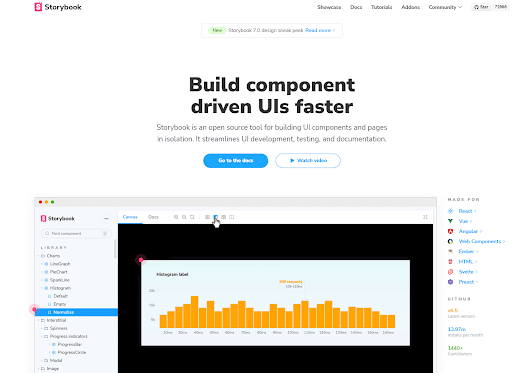
Chromatic is a revolutionary tool that makes it effortless for developers to verify the readability and accuracy of their code visually. It uses Git to easily compare snapshots of folders between one another, allowing any team member to quickly catch visual errors or inconsistencies before they become a problem. As a bonus, Chromatic automatically does all the heavy lifting for you. For instance, reading through your code for errors isn’t easy work, but Chromatic helpfully pops up suggestions on how to fix these common issues so that you don’t waste time tracking them down.
Chromatic is centered around testing and visual regression testing components – the basic building blocks of apps. Testing at the component level makes it easy to scope tests and determine regressions in web apps (just like unit tests help you pinpoint functional bugs). The real-time dashboard provides a bird’s eye view of your app’s behavior in different browsers and resolutions.

When comparing component-based architecture to MVC design, MVC always divides functions horizontally, whereas component-based architecture divides them vertically. Confusing right? Let’s dive deeper into it.
Using a client-side MVC framework, you have templates presenting the UI and routes determining which templates to render. Controllers use these to map URL requests to specific actions. Services provide helper functions that act as utility classes. Even if a template has routes and associated methods or features logic, all of these exist at different levels.
In the case of CBA, responsibility is split on a component-by-component basis. Rather than having different people responsible for different aspects, CBA does it component-by-component. So, if you’re looking at the view, you’ll find the design, logic, and helper methods all in the same architecture level. This can be helpful because everything related to a particular component is easy to find in one spot.
Let’s observe 10 best practices that help you organization with component reusability and testing.
While component based architecture renders many benefits. Here are some instances where one should prevent using it.
Component-based architecture is undoubtedly gaining traction within the development community. As the React.js framework continues to gain traction among software engineers, both Ember.js and Angular2 are being updated by their respective development teams to incorporate components into their core functionality.
Component-based architecture equipped with an identity server for user management offers a perfect combination to serve a user's evolving needs and higher control for developers in achieving their desired objectives.
Low-code tools can be component-based, but no-code developers still have a more powerful option in this case, especially when you need to extend the functionality of a component beyond what it was designed to do. For instance, WotNot – a no-code chatbot platform -has a simple drag-and-drop interface, which makes it a cakewalk to architect personalized conversational experiences across the customer life cycle.
Also read – Mendix Vs. OutSystems – Make an Informed Decision
Engineered software components adapt to the unique needs of individual companies, streamlining time-consuming enterprise application development and allowing one to focus on overall business success.
At Maruti Techlabs, we function as your end-to-end product development partner. From UI/UX to development, product maturity, and maintenance, along with building AI modules within the product, we help you through the entire product development lifecycle.
Thanks to the rise of component-based development, you are no longer forced to be a jack of all trades.
Get in touch with us to get started with component-based development with the help of our highly talented squad of front-end developers.
Key principles of component-based architecture are:
Encapsulation: Only exposing essential information required for interaction.
Reusability: Convenience in using the same components in different applications or parts of the system.
Composability: Ability to assemble in different configurations to develop more extensive and complex systems.
Replaceability: Components can be replaced without affecting the entire system.
Testability: They can be tested individually.
Component-based architecture promotes internal code reuse focusing on developing modular, and reusable components in a single application. Service-oriented architecture promotes scalability and flexibility using standardized communication protocols focusing on building loosely coupled, reusable services across multiple applications.
Angular is a robust framework that has earned massive popularity in web development. One of the reasons for this fame is the component-based architecture that offers great flexibility with how web apps are structured and created.
Here are the 3 main parts of each component that eases the development process in Angular.
Here are the top 3 reasons to use a component-based architecture.
With React.js, all the components can be accessed separately. Subsequently, one can perform multiple changes in one section of the app without disturbing or altering the other sections. Furthermore, the same components can be tweaked internally and revamped for use in different areas of the same app. This accounts for an efficient process as there’s a lot less to build from scratch or update.


